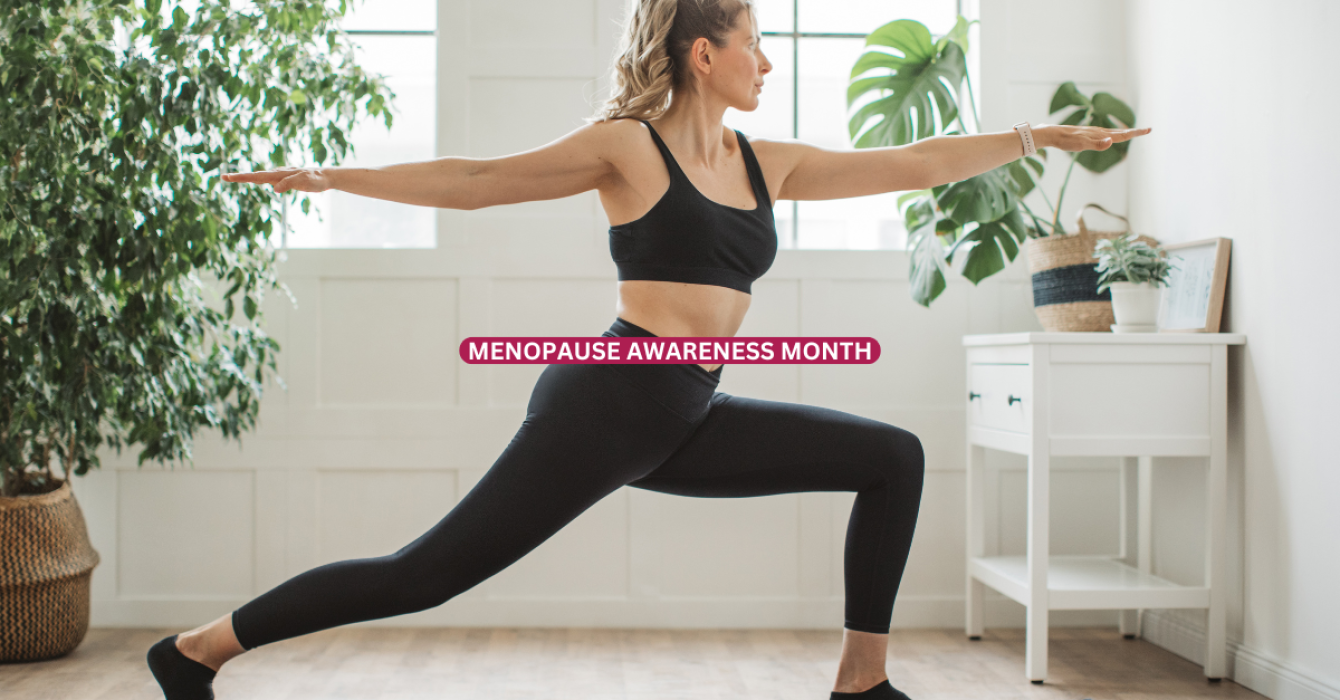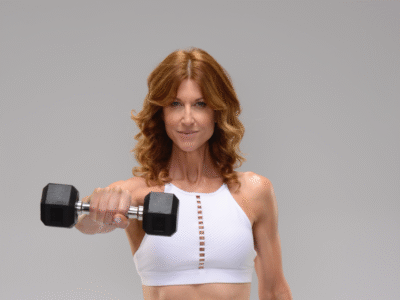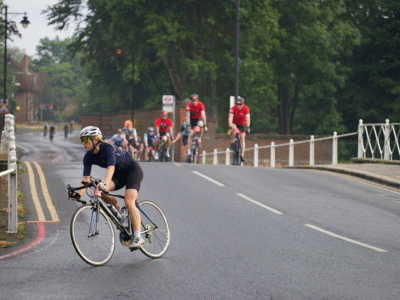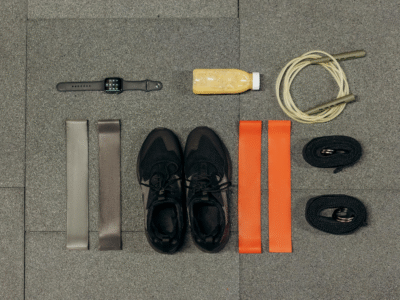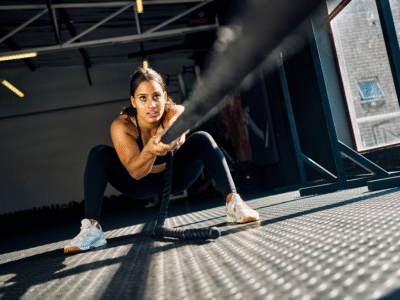From strength training to yoga, these exercises help your weight loss, bone density and mood.
Sign our petition asking for menopause support to be increased on the NHS.
Joint pain, fatigue, hot flushes, low mood… typical menopause symptoms don’t put us in the best frame of mind to tackle HIIT workouts or 5K runs.
But movement can be your saviour as you enter perimenopause and continue into postmenopausal life. An exercise plan that works with your changing needs can reduce symptoms, future-proof your physical health and improve your body positivity and self-esteem for decades to come.
Fluctuating hormones have various effects on the body, so what is the best form of exercise? You may have heard strength training is the best workout during perimenopause and beyond thanks to its ability to combat bone density loss, but does that mean no more cardio? And what about tackling ‘menopause belly’, a term that has seen a huge increase in Google searches over the past 10 years?
Whatever you do, say the experts, it’s important to keep moving.
Read more: What you should (and shouldn’t) eat during perimenopause, according to experts

“Exercise is crucial in the menopausal phase of life,” advises GP and menopause expert Dr Cliona O’Connell. “Not only does exercise release endorphins, the ‘happy hormones’, but it also has a beneficial effect on cholesterol, which can increase during this time.
“Exercise can also help increase strength, flexibility and balance, which can be affected by the reduced muscle mass that results from declining oestrogen levels.”
But getting hot and sweaty in a spin class may not deliver the highs as it used to. As hormones fluctuate in perimenopause, then drop in menopause, anything that causes spikes in cortisol — such as high-intensity cardio — can make a stressed body and mind feel even more off-kilter.
“Pushing yourself too hard can aggravate an injury or worsen symptoms,” explains fitness trainer and Active IQ ambassador Robyn Drummond. “During menopause, your body undergoes significant hormonal changes, which can affect how you respond to exercise. So, as our bodies change, so should our exercise plans and nutrition.”
That doesn’t mean giving up cardio forever: it’s all about balance. Robyn suggests that an exercise plan should prioritise low-impact activities, rest and recovery, but also include cardio and, ideally, two strength training sessions per week.
Read more: Menopause treatments to discuss with your doctor (from HRT to non-hormonal options)

5 of the best exercises for menopause
1 . Strength training
For years, strength training was seen as the preserve of bulky ‘gym bros’. But thanks in part to the impressive results of celebrities such as Jo Whiley and Davina McCall, more midlife women are working the weights.
Strength training — also known as resistance training — can include upper and lower body exercises with dumbbells, kettlebells, resistance bands and weighted machines in the gym. Bodyweight exercises such as squats, lunges and planks are also an element.
“Oestrogen plays a key role in preserving muscle mass and bone strength,” explains Robyn. “The natural decline of oestrogen levels can lead to a loss of both. Strength training helps counteract this by building and maintaining lean muscle, keeping bones strong [which reduces the risk of osteoporosis] and supporting overall strength and resilience.”
It could also be the key to reducing the dreaded ‘meno belly’. As Robyn notes, losing muscle lowers your basal metabolic rate (the amount of energy you need at rest). “This results in your body burning fewer calories, potentially contributing to weight gain,” she explains. But increasing muscle mass through strength training can increase your basal metabolic rate, burning more calories day-to-day.
2. Walking
The humble walk has been elevated to gold status in the fitness world, thanks to studies confirming its physical and mental health benefits. Dr O’Connell believes it’s particularly good during menopause: “Walking is a weight-bearing exercise, which is beneficial for bone health.
“To make it a more challenging cardio workout, leading to positive effects on the heart, speed can be increased gradually over time.”
Walking at a pace that leaves you slightly out-of-breath counts towards the NHS’s recommended minimum of 75 minutes of vigorous exercise a week. By adding a weighted vest, you can further improve your bone health.
Step off the treadmill and into a natural setting — such as a park, woodland or coastal path — and you can boost your mood too. Exposure to nature has a positive effect on our mental health, with a King’s College London study concluding that locations combining water and green space, such as lakes and canals, have the greatest impact.
Read more: Why women (including Kate Winslet) are getting testosterone replacement therapy

3. Swimming
Swimming is a great full-body exercise with flexible intensity: you can go slow to reduce stress or speed up for a cardio workout. A few laps of a local pool can improve your mobility, strengthen muscle and boost both your heart health and your mood.
It’s particularly good during menopause because water supports your joints, which is useful if you’re suffering aches and pains. Swimming is also a form of resistance exercise, which increases muscle and burns calories. According to Harvard Medical School, an 84kg woman can burn around 444 calories during a 30-minute vigorous swim (think front crawl rather than breaststroke).
If you can brave it, dive into the wild swimming craze for additional benefits. A study led by University College London concluded that cold-water swimming can significantly improve menopause symptoms such as hot flushes, anxiety and mood swings.
4 & 5. Yoga and Pilates
They may be different disciplines — you’re probably #TeamYoga or #TeamPilates — but both are particularly beneficial during menopause. “They improve flexibility, core strength and joint function, which can become more challenging due to hormonal changes,” explains Robyn. “They also reduce stress and promote better sleep through mindful breathing.”
Robyn recommends scheduling Pilates or yoga between days of higher intensity exercise: “As we age, muscles and connective tissues need more time to recover, so it’s important to prioritise that. Yoga and Pilates are ideal for ‘active recovery’.”
Take it easy, though. Variants such as Ashtanga yoga and reformer Pilates can be tough and challenging. That’s great for strength and flexibility, but not the best for menopausal bodies more prone to injury.

